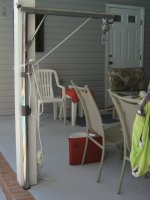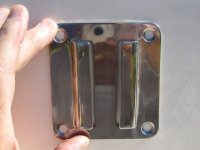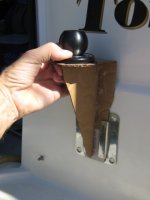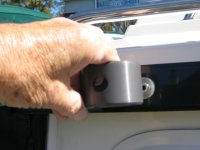Greg
In response to your questions on page 1 about Soar inflatables:
I initially tried a 14 foot soar - a very dry inflatable canoe. Well built expedition boat - owner Larry of the Soar line was easy to work with. If you like to canoe and definitely want to sit above the water give it a try. I think I would have liked the 12 footer better.
I returned it due to size and as stated before hard to paddle in the wind with one person, the biggest reason was that as much as I like to canoe [instructor for years in New England] the one sided effort of canoing versus paddling on both sides in kayaking was uncomfortable for my particular back problem.
I then borrowed an Aire import called the Tributary strike [5 yr warranty] - an inflatable kayak. Big difference - easier to manage for on and off the Dory for me but closer to the water[wetter] and it still did not track that great using the Sea kayak paddles that I have for a Current Designs sea kayak.
After reviewing the
www.theboatpeople.com website for months I purchased the Aire Super Lynx 14' 43 pounds - and know I made the right choice for my body - and paddling desires. They rated it as one of the faster inflatables. It is a cross between the Lynx II a tandem white water boat that has more rocker and the very long Sea Tiger their inflatable seakayak 18" - and 62 pounds. It will handle some serious white water in bigger rivers where the rock garden maneuvering required in New England is not an issue. I used one like it years ago [tandem] on some III-IV water on the Snake or Salmon. On flatter water - It will handle three adults as a dinghy to shore no problem and it will also handle two adults and a Rotweiller wearing his life jacket standing up and walking back and forth without big stability problems.[Stern paddler gets lots of dog kisses in that situation] It has one of thickest IK floors - hence dryer. Great seats that can be moved around or used on shore etc. It handles very well solo - with 2-3 gallon container of water in the front seat or just move the seat to the 1/3 position and less wt.
On the way home from the Gulf Island - we spent the night in the Blakely Harbor Marina - just south of Orcas. I paddled around Blakely island solo - both with and against current - using wind, waves, surfing, and back eddies - - it was a blast - and got to see some great wildlife.
What I like about the Super Lynx is it is very easy to get into from the water, and from CDORY -It is difficult to flip it by accident on flat water, I also like the idea of the Super lynx for young families - with two younger kids who want to look over the side at sea life in shallow water - balance is not difficult. It makes good platform for photography, or just checking out the shore line. Its fun to surf some tidal rips and should be fun to take out on the coast in the surf next summer.
It will not tow easily due to self draining ports that fill when pulled fast.
NRS - is an Idaho boating equipment and guide company and they use the Aire boats for guiding due to durability, - dogs not a problem and great warranty.
Aire boats come with 10 yr no fault warranty - double wall, zipped outer tubes and inner bladder, they are easy to blow up
One other piece - I consider this boat a survival boat if I ever have to leave the CDory - we will get wet [low profile for reduced windage] but in the worst ocean conditions two persons can lie flat - head to toe and still keep kayak paddles to the sides for stability [an old technique to make canoe more stable in big storm] once the object became surviving rather than navigating to a specific spot.
One minor negative - the stainless drain ring in the pockets sewed into the seat backs is poor quality and will rust onto the floor- I just pulled it off - the sealed nylon is fine without it.
I have no financial connection to Aire - or Soar - they both make fine products.
If anyones lives anywhere near S Puget Sound and want to try it let me know - - there are some photos that others took of it on top of the CD-22 Endurance on the Gulf Island trip - will try to post a couple of other photos soon.
Jim
on Endurance














